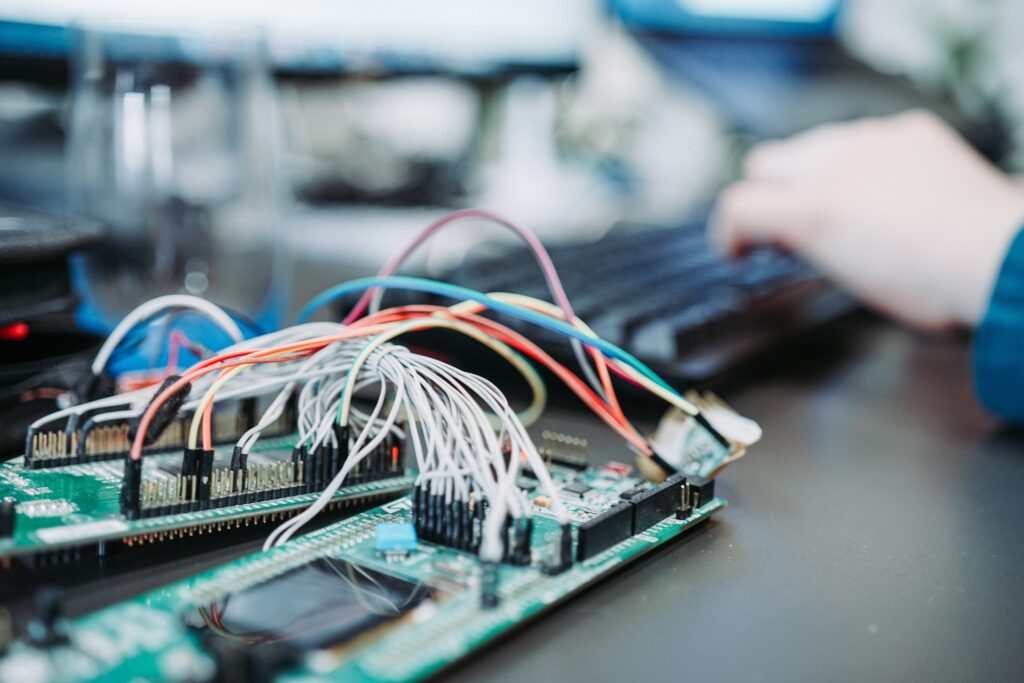As the benefits and applications of Internet of Things (IoT) systems are becoming more apparent, the term “Industrial Internet of Things” is being used more frequently. While the word “industrial” conjures images of factories and warehouses, the Industrial Internet of Things is a much broader term that can be used in many diverse industries, including healthcare, retail, and financial services.
What is Industrial IoT?
The Industrial Internet of Things, IIoT for short, is a subcategory of the Internet of things (IoT) that focuses on optimizing operational efficiency and automation. IIoT integrates machines, cloud computing, and analytics to boost productivity and performance of industrial processes. Using IIoT, industries can digitize and automate processes to improve performance while decreasing waste.
In industries such as manufacturing, utilities, transportation, and agriculture, companies are asset intensive and IoT projects are thus very large in scale, connecting up to billions of devices. These projects deliver value across multiple use cases, including process optimization, predictive quality and maintenance analytics, asset performance management, and automation. With IIoT, it is possible to aggregate the machine data across an entire factory or site to identify quality issues, bottlenecks, or malfunctions before they cause major concerns.
What is the difference between IoT and IIoT?
While both IoT and IIoT cover many industries, applications, and use cases, IIoT is classified as a subcategory of IoT, focusing primarily on industrial processes. While IIoT focuses on increasing performance and efficiency of industrial operations, IoT also covers broader, consumer-facing applications such as smart wearable devices and self-driving cars. IIoT focuses on linking equipment, sensors, controls, and instruments in industrial settings, whereas IoT covers a wider range of linked devices across all industries and demographics.
What are some uses of IIoT?
IIoT can produce game-changing efficiencies for many sectors of the economy that are heavily reliant on manufacturing and equipment. These efficiency improvements have significant impacts on these companies’ bottom lines and profitability and thus cannot be ignored.

Production and Manufacturing
Production and manufacturing is currently the subset with the largest IoT spending in the larger manufacturing sector, where IIoT-enabled machinery is used to self-monitor and identify possible concerns before they become problems, improving overall efficiency. Manufacturing operations alone accounted for the majority of IoT use case investments. Production asset management and field service are two other crucial use cases in the manufacturing sector.
Supply Chain
IIoT can be used to increase efficiency in supply chains by automating processes and providing increased visibility. Sensor managed inventories can monitor stock levels and place orders when supplies are low. Connecting all areas of the supply chain allows data to be shared quickly, creating a digital supply chain that is more efficient and agile. This not only prevents stockouts, but also helps employees focus on other tasks.
Logistics and Transportation
The transportation industry implements IIoT for advanced communication and monitoring systems. Freight monitoring, which allows users to track the location of shipments, is the primary use case of IIoT in this space. The logistics and transportation industry is the second largest market for IoT, expanding rapidly as companies across the globe work to digitize their supply chain.
Energy and Utilities
Utilities is the third largest industry for IoT spending, the largest area of investment being the implementation of smart grids for electricity and gas. IIoT can be deployed to monitor multiple energy meters and share that data across devices to provide combined performance data on the entire facility. Integrating Distributed Energy Resources (DER) into the grid can speed-up electrification, increase grid stability, and reduce expenses. Smart grids open up a variety of use cases for Industrial IoT, including maintaining and monitoring plant efficiency and matching supply to demand on a local scale.
Healthcare
IIoT also has applications in healthcare, making service more responsive and precise. IoT-enabled devices can be used to monitor patients remotely and alert healthcare providers if immediate attention is needed or to automate the release of medication if certain parameters are met. IoT can also be used for equipment maintenance and in operational management to streamline various processes, allowing healthcare providers to concentrate on patient care.
Retail
In the retail industry, IIoT can make quick decision on how to market products in individual stores based on consumer interests. Promotions can be automated to cater to specific customers and demographics, giving retail outlets who implement IIoT technology an edge over their competitors.
The Industrial Internet of Things is essential for all companies as it optimizes the efficiency of all business activities and operations. With applications in every industry, IIoT enables businesses to operate smoothly, while cutting expenses and increasing productivity. Edgecom Energy’s IoTrack™ platform, for example, assists businesses in monitoring their energy usage and device performance, enabling problems and potential areas for improvement to be identified sooner. Contact us to learn more about how our IoT solutions can help optimize your operations.

